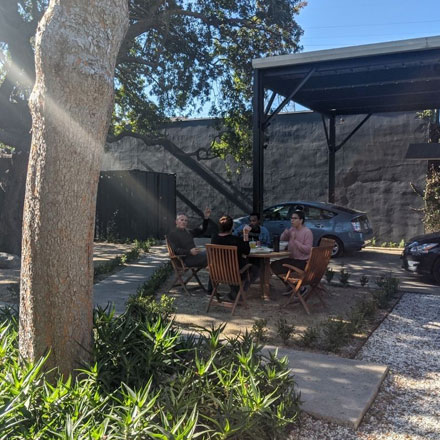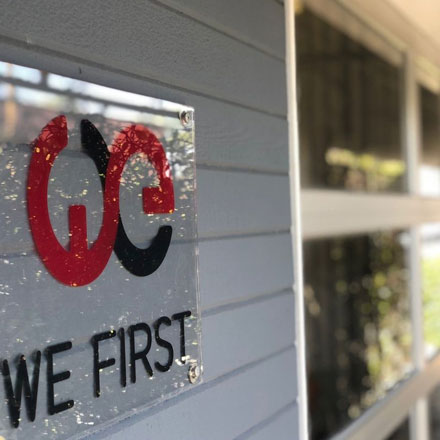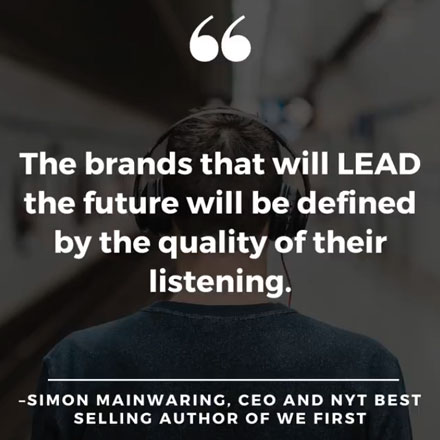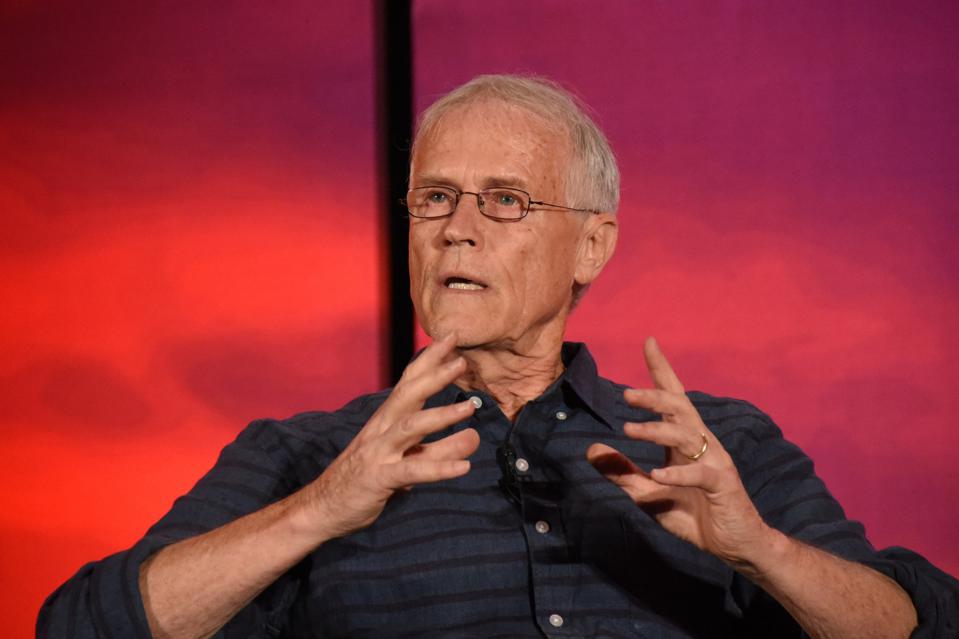
Blog
Purpose At Work: Paul Hawken’s ‘Regeneration’ Reveals A Critical Roadmap To End The Climate Crisis
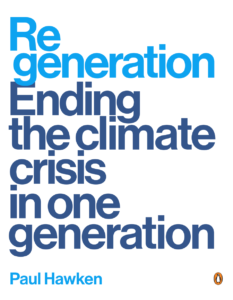
Environmentalist Paul Hawken can’t help finding himself mired in the same paradox that many activists and scholars have wound up in over the past few decades. He is positive about a new generation of stewards — and aware of how many leaders hold leverage and have failed to act. He is able to eschew the ineffective “shame and blame” game — yet possesses a near-encyclopedic knowledge of the corporate and consumer inattention and avarice that has brought the Earth and its humans and nonhuman inhabitants to today’s “Code Red” state.
Hawken is not only an environmentalist, he’s an entrepreneur and bestselling author published in thirty languages in more than eighty countries, having sold more than two million copies. He’s a renowned lecturer who has keynoted conferences and led workshops on the nexus of commerce and the environment, and has consulted with governments and corporations throughout the world.
He’s enjoyed half a century at the forefront of thought leadership, activism, and collaboration with leading brands, all laying the groundwork for the critical global shift toward a regenerative economy.
Now, in a twist that would be funny if it weren’t so depressing, Regeneration: Ending the Climate Crisis in One Generation — his latest of nine books — was to have launched last week. Because of the “printer jam” occasioned by widespread shutdowns, which upended the publishing industry, his publisher Penguin Random House had to push the release of Regeneration forward. The book was further “climate delayed” (Hawken’s apt term) after Hurricane Ida shut down the publisher’s distribution center.
The book arrives in the marketplace on Sept. 21, 2021, which happens to be the Autumnal Equinox in the northern hemisphere. Which suits Hawken just fine. “It’s perfect,” he says. Equinoxes are all about the recognition of circularity and the planet’s strong tendency toward balance and abundance through regeneration.MORE FOR YOUIn Crypto ‘Arms Race’ For Mass Adoption, Companies Ink Sports Sponsorships Worth Hundreds Of MillionsCAA Signs Jenkins The Valet: Is This A Sign That Hollywood Is Embracing NFTs?HPE’s Sandy Ono On Insights At Hyper Speed To Drive Growth And The Value Of Marketing’s Currency
The word “regeneration” has been bandied about more recently, kind of like a natural evolutionary stage arising out of sustainability. But Hawken isn’t co-opting the word. He has a history, in fact, of cementing lexicon that leads to cultural and practical promulgation through philosophy and policy. That’s what he did in 2017 with Drawdown: The Most Comprehensive Plan Ever Proposed to Reverse Global Warming, and the impact it created and sustains.
Hawken defines drawdown as “that point in time when the concentration of greenhouse gases [GHG’s] in the Earth’s atmosphere begins to decline on a year-to-year basis.” It had been rarely discussed before in the literature and had never been discussed as a goal. And, since his delineation and exploration of the term, the word “drawdown” has grown into general use. The idea has been adopted by millions, taught from fourth grade to graduate school, referred to by some global leaders, and you can even find the book ensconced beside the Gideon Bible in the rooms at one New Zealand hotel chain.
He always had Regeneration in mind as the sequel. Drawdown was a what-could-be-done book infused by the work of the research team led by Chad Frischmann. Regeneration is a how-to-get-it-done book that leads to a website that is the world’s largest listing and network of climate solutions. Called Nexus, it spells out what everyone can do on all levels of agency, and how to connect and align with other people and groups in your region and the world.
But what exactly is regeneration? Turns out, “It’s both simple and complex.” Hawken says.
Challenge 1 to widespread adoption of regenerative ways: Definition
First off, we have to agree on our terms. If broad terms like “climate change” are not accurate descriptors (the problem is global warming— our climate changes every nanosecond and always will), or as with “sustainability,” a word too vague and fuzzy to be useful, then a movement based on them will not work.
Consider the pervasive ESG movement over the past decade. “Thirty percent of large corporations are ESG rated,” Hawken reminds us. “They’re extractive, taking life, destroying the world knowingly, but mostly they are ignoring it. We put money in banks to save for our future and banks take that money and destroy the future. They’ve invested or loaned $3.6 trillion to fossil fuel companies since the Paris agreement.”
We need new measures and metrics for growth and success. New parameters and more transparency. And here, regeneration is the most rational, albeit ambitious, option available. So, here’s the more esoteric definition, in Hawken’s words: “Regeneration is a radical new approach to the climate crisis, one that weaves justice, climate, biodiversity, and human dignity into a seamless tapestry of action, policy, and transformation that can end the climate crisis in one generation.”
In a “much simpler” definition, says Hawken, “Regeneration is putting life at the center of every act and decision … an orientation … looking at what we do; what we think; what we buy; and how we interact with each other, with the natural world, and with the world of goods and services,” he tells We First.
Regeneration is a natural part of our lives. “It’s innate to being a human being. All 30 trillion of our cells regenerate every nanosecond, or we wouldn’t be having this conversation. Regeneration is what we do as living beings, as a species of life on the planet. We regenerate ourselves, by taking in air, water, or food. We care for our children. We do it with our pets, do it with our garden. We care for others. We regenerate in our synagogue, church, or temple.”
It comes down to this, Hawken says: “Life creates the conditions for life.”
Yet, “What’s happened is we have created — inadvertently, mistakenly — an economic system that is the opposite. It’s one that extracts life … an extractive economy,” Hawken argues. “If you follow the breadcrumb trail back into any supply chain, anything you buy, any service you receive, you will find that it is extracting life from the living world, from the oceans, from the land, from the forest and the soil — and from people, by the way.”
And, “When you take life, you are degenerating,” he says. “Today, with business-as-usual, “We’re stealing the future from our children and their children and generations to come.”
“The underlying assumption of industrial agriculture is that we can produce more life (food) by killing life, killing the organisms in the soil, killing weeds, killing the pollinators — and we’ll have more corn, more soy to feed the cattle and pigs and our children in the form of high fructose corn sugar and fat-laden food,” Hawken says. “And consumers here in the U.S. are eating primarily ultra-processed food, which causes 70 percent of the [chronic] disease [in the West].” He describes this foolhardy and inefficient process — and the attendant prolonged impacts it causes as “basically a chemical experiment upon humankind.”
But we might be at an “inflection point,” Hawken says. “This is the point where we may have got it. Whoa! Let’s do a 180. We can have a prosperous GDP that’s about healing the future.”
Specifically, Hawken intends to continue mobilizing and moving the direction of extant regenerative practices already afoot in progressive businesses and regions. “Ending the climate crisis in one generation means progressing at a rate that will take us to net-zero by 2050, a time when we will have set aside at least 30, if not 50 percent, of the natural world, and not impinge on it or harm it in any way. Ending the crisis means that by 2030, we can look at each other and say, ‘We’re on it. We haven’t completed it. We’ve got a long ways to go, but we’ve pivoted.’”
What’s at stake? “Regeneration means bringing the Earth back to life,” says Hawken. “And when you bring the Earth back to life, you bring yourself back to life. You bring your family and friends back to life.”
Regeneration, in addition to being necessary, is logical, rational, reasonable, and natural. Hawken recommends we look at what nature’s telling us to understand the difference between degeneration and regeneration. “We’re being homeschooled by the planet. She is our teacher and we’re getting lessons every day,” he says. “Lesson number one is, ‘Get in alignment with biology — with life itself — because that’s the only way we can reverse global warming.’”
Again, Hawken suggests we consider today’s urgency as “an offering, an opportunity, an opening, as opposed to a closure.”
He describes six pathways to regeneration:
- Equity: Fairness and kindness, for all, not just a lucky few.
- Reduce: Decreasing GHG emissions from combustion of fossil fuels and misuse of land.
- Sequester: Bring atmospheric carbon back home from where it came.
- Protect: Terrestrial ecosystems contain four times as much carbon as the atmosphere. We need to retain and keep that carbon here lest we emit even more carbon.
- Influence: Actively address politicians from local to national, and businesses and corporations that are not acting responsibly.
- Support: There are tens of thousands of organizations doing amazing work on these issues. Volunteer, contribute, encourage.
Challenge 2 to widespread adoption: Separation
For regeneration to work We have to work With each other toward the common good. “I think that what has crept into our politics, into our economics, into our cultural beliefs, and into the climate world as a whole,” says Hawken, “is othering. We’re othering each other. That’s racism. That’s antisemitism. That is obviously the #MeToo movement and sexism, but it’s also in the climate movement,” he posits.
What he means is that we’re not only arguing against opponents about whether and how to “mitigate” or “fight” the climate emergency, but “we’ve separated human beings [from the environment] as if climate was out there somewhere and our job is to fix it. There is no it. The way we’re thinking about it is the problem itself.”
“Regeneration happens when there is community,” Hawken argues. “This is not about individuals being heroes or sheroes or about being right and making other people wrong. That doesn’t work.” So, focus on the We. And remember the We includes everyone, other species, and the planet itself.
Challenge 3 to widespread adoption: Emotion
Narration and emotion are tightly wound. We all have to start telling a story of responsibility and agency, urgency and optimism, resonance and emotion, Regeneration reasons.
How to tell the story of regeneration effectively is top of mind for some of the CEOs of the world’s largest and most influential companies,” Hawken reports. “The reason they’re asking the question is because sustainability and ESG ratings were about renewing your social license, how the company could keep up with changing values and perceptions. What consumers think is acceptable or unacceptable keeps evolving, and you keep renewing your license. ‘We don’t do this anymore. Or we’re committing to net zero by 2050. How are we going to get there? We have no idea, but we’re committing.’ This is different. I have met some of these CEOs,” he says. “They run some of largest companies in the world. And the difference today is that they get it.”
“I don’t mean they get it intellectually — although I think they do. They get it emotionally. They get it as fathers and mothers, as uncles and aunts, as brothers and sisters, as community members, members of churches, temples, and synagogues,” Hawken relates. “You see it in their eyes, it’s completely different. It’s an oh-my-gosh moment. ‘Here I am at the helm of one of the biggest companies in the world, that arguably serves people with what they need … It could be food, it could be other things …” and suddenly, they realize that they no longer wish to extract but rather create circular and regenerative supply chains and systems.
Challenge 4 to widespread adoption: Expansion
It turns out that the idea of “growth itself” might provide the most powerful obstacle to a better understanding and uptake of regenerative ways. “The biggest obstacle is always Wall Street,” says Hawken. “Stock valuation— if the company value doesn’t go up, the CEO has failed.”
But what if we redefine or at least expand the idea of growth? “Arguably,” says Hawken, “once we [as individuals] stopped growing physically, in our twenties, 19, 18, whatever … we continue to grow, but we don’t grow in size. We grow in depth and complexity and understanding and compassion. And I think the same thing exists for the economy as a whole right now. What’s going to grow? Is it growing in such a way that creates more life?” Or is it just creating more money for the very few, the very lucky, the very greedy?
“Do we really want to clearcut the boreal forest to make cardboard boxes for Amazon? Is that a good idea? Or how about plush toilet paper for Procter & Gamble out of virgin trees in the boreal forest, the largest stock of carbon on terrestrial systems in the world?”
Regeneration argues that if we can do the opposite, which is to increase the amount of life and carbon in just 9 percent of our lands — our backyards, farms, forests, grasslands, mangroves, wetlands, etc. — “we will have sequestered all the excess carbon in the atmosphere since the Industrial Age,” Hawken goes on to say. “If we increase carbon content in our terrestrial system by 14 percent, which is more challenging, we will have also sequestered all the carbon that will be emitted between now and 2050, according to the ‘business-as-usual’ forecast.”
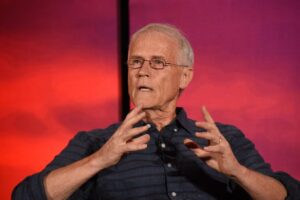
Final advice from Hawken about coming to understand regenerative ways
“My journey began outdoors in nature when I was four or five years old. In my house, it wasn’t safe. I won’t go into that, but only to say there was fear inside my home. So I went outdoors as far and as much as I could, as often as I could. And here’s the interesting thing about that:
“If you are three, four, or five years old, you can master the inside of a house in a couple hours, from the light switches to the refrigerator. If you have a TV, how to turn it off and on, whatever. Now, if you go outside, which I did, and sit outside, or walk outside, you don’t know what’s going on. You don’t know the names of things. Who’s making that sound? You lift up a rock and things are crawling away. What are they and where are they going? There’s a leaf, what is it? What kind of tree is it? What are those berries on it? Are they good? Are they poisonous? What developed in me as a result was curiosity.”
“You could spend ten lifetimes outside and not understand what’s going on — but you can study it, you can embrace it. I always felt safe outside. That realization was really the turning point in my life …”
I don’t devote space to recounting Hawken’s childhood just for nostalgic reasons. I do so to show that overcoming the challenges spelled out above can be wonderfully simple. By reanimating, as Hawken did as a child, and doing so continuously throughout his life, our connection to nature and our curiosity is inspired. Along the way, we’ll reawaken the wisdom of our elders, of the indigenous peoples who came — and survived for thousands of years before us — by understanding and caring wholeheartedly for the world around them. By doing so we will also revive our wonder, not just for nature, but the powerful role humanity can play in regenerating life itself — hopefully in the span of one generation.
You can buy Paul Hawken’s book, Regeneration, here and be sure to explore the companion courseware to become part of the regeneration movement.
Author's note: The earlier draft was published before approval. My personal apologies.
If you’d like to dive deeper with more purpose-led companies, check out the Lead with We podcast here, so that you too can build a company that transforms consumer behavior and our future.



